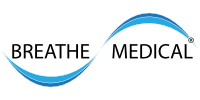The Breathe Medical® Devices
The Breathe Medical® Device is a specially designed oral device that holds the lower jaw forwards and brings the tongue slightly forwards which helps to prevent the airway closing off when the muscle and hence soft tissue tone in the throat lose their tone (relax) during sleep.
Benefits
- Treatment is fully reversible (simply remove the device).
- Does not affect speech once removed.
- Tailor-made to achieve a great, comfortable fit for each user.
- Highly portable.
- Easy to clean and maintain.
- Minimal servicing required.
- No requirement for surgery (expense, post-op morbidity and inconvenience).
- Can be used in collaboration with other treatments for improved outcomes and tolerance.
Contraindications
A Breathe Medical® Device can be a very effective long-term treatment for obstructive sleep apnoea (OSA).
It functions to ensure the patients airway is kept open throughout sleep. Each device is custom made to the specific patient requirements. One size fits all/ boil in the bag solutions are very poorly tolerated due to poor fit and retention.
The importance of a bespoke tailor-made solution cannot be over emphasized because every patient varies in their;
- Jaw alignment
- Tooth position
- Tooth shape/ size
The Breathe Medical® Devices are precision made to a clinical prescription. This ensures that the patient experiences the maximum amount of comfort. The device is the correct size so that it can do the job but also low profile to stop it encroaching on the tongue/ mouth space. They are designed to be Strong enough to withstand the high forces within the mouth.
Untreated sleep apnoea has been linked to;
- An increase of premature death by ~30%.
- A reduce life expectancy of up to 10 years.
- Increased chance of falling asleep at the wheel. Posing significant risk of death to the driver, passengers and others who are unlucky enough to be in the way.
- Misery for the sufferer.
- Misery for partners (who share the bed and sometimes those who share the house!).
- Unneeded stress in marriages and partnerships.
What can Breathe Medical® Devices be used to treat?
Snoring
It is great to know that the mass majority of snoring suffers can be successfully treated with the Breathe Medical® Device.
Recovery Position is learned in first aid and ensures that the lower jaw falls forward and ensures the airway remains clear. This is especially relevant if the person in this position is unconscious (and hence unlikely to wake up if the airway is not clear (potentially suffocating).
The use of a Breathe Medical® Device as a Mandibular Repositioning Device (MRD) is highly regarded and provides a solution which has grown in popularity internationally and is often considered the world most popular snoring solution and a viable alternative to CPAP therapy.
Mandibular repositioning devices (MRD’s) vary considerably in their quality and hence functionality and tolerance.
What makes the Breathe Medical® Device better than alternative Mandibular Repositioning Device (MRD)?
Cheap non-custom devices (boil-and-bite) versions are designed to fit all mouth/ jaw shapes. So in essence do not fit any mouth/ jaw well. They are made with a thermoplastic material that can be softened in hot water and then partially moulded around the teeth. This system is not tailor made and hence;
- Lacks comfort
- Does not fit well
- Is poorly retained
- Bulky (feels large and encroaches on tongue space which can feel claustrophobic).
Hence the device is both poor at its job but also not well tolerated by the patient.
Customised Breathe Medical® Devices
Benefits
- Treatment is fully reversible (simply remove the device).
- Does not affect speech once removed.
- Highly portable.
- Easy to clean
- Minimal servicing required.
- Custom made
- Infinitely variable
- Lateral mobility (the lower jaw can be moved side to side, which improves tolerance).
- Slender (non-bulky)
- Fracture resistant
- Comfortable to wear
- Many clinical studies back up its treatment success.
- After-care.
Disadvantages
- Use of the device may cause tooth movement (usually moving the teeth to the position they were in during the initial impression), although some tooth drift can occur. This in turn may adjust the patient’s dental occlusion. Note: This can occur with any (mandibular repositioning) treatment.
- A slight adjustment in the jaw relationship (although this would normally be beneficial in actually allowing the jaw position to be more natural (rather than simply defined by tooth position/ shape of teeth and fillings/ restorations (crowns, bridges etc…).
- Excessive salivation (this tends to pass quickly once you have worn the device a few times – the body adapts) – usually within a few days.
- Possible reduction of breathing through the mouth due to the preferred jaw position, breathing occurs through the nose instead.
Contraindications
- Patients who have Central Sleep Apnoea (CSA) where the issue is with the brains’ ability to sense and initiate breathing (rather than a physical obstruction, seen with OSA).
- Patients under 18 years old (their teeth have not finished moving/ erupting).
- Patients with periodontal (gum) disease and/ or loose teeth.
- Patients with (severe) respiratory disorders – please discuss with your physician (GP) / consultant.


